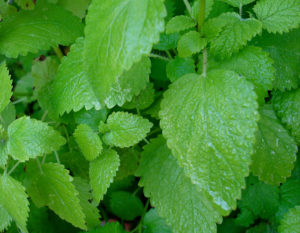Balm mint is a perennial herb from the mint family. The leaves, which have a mild aroma, are used to make medicine. Balm mint is used alone or as part of various multi-herb combination products.
Contents
Uses
The leaves of the Balm Mint contain triterpenic acids, phenols and essential oil which as been attributed to pain killer action. Balm Mint Oil owes its cosmetic application mainly to their emollient and moisturizing properties. It is recommended for use in body milks and hand creams.
Benefits
Balm mint is used for digestive problems, including upset stomach, bloating, intestinal gas (flatulence), vomiting, and colic; for pain, including menstrual cramps, headache and toothache; and for mental disorders, including hysteria and melancholia.
Many people believe balm mint has calming effects so they take it for anxiety, sleep problems, and restlessness. Balm mint is also used for Alzheimer’s disease, attention deficit-hyperactivity disorder (ADHD), an autoimmune disease involving the thyroid (Graves’ disease), swollen airways, rapid heartbeat due to nervousness, high blood pressure, sores, tumors, and insect bites.
Balm mint is inhaled as aromatherapy for Alzheimer’s disease.
Cautions
Balm mint is LIKELY SAFE when used in food amounts. It’s POSSIBLY SAFE in adults when used in medicinal amounts short-term. It’s been used safely in research for up to four months. Not enough is known about the safety of lemon balm when used long-term.
Other Names
Balm, Bálsamo de Limón, Cure-All, Dropsy Plant, Honey Plant, Melisa, Melissa, Melissa officinalis, Melissae Folium, Mélisse, Mélisse Citronnelle, Mélisse Officinale, Melissenblatt, Monarde, Sweet Balm, Sweet Mary, Toronjil
References
Source: Centerchem, http://www.centerchem.com/Products/balm-mint-oil/
Image source: https://bonnieplants.com

